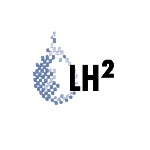- Projektbeschreibung
-
Microbial reduction of uranium may prevent its migration to receptor streams. However, application of this technology to field sites is untested, and future site remediation will require improved understanding of basic processes and implementation strategies in heterogeneous environments. The objectives of this study are (1) to develop a predictive capability for the rates and mechanisms controlling microbial reduction of U in heterogeneous field settings, and (2) to develop a system capable of delivering electron donor to a highly heterogeneous subsurface environment enabling spatially uniform in situ immobilization of U in groundwater upon passage through a subsurface biocurtain. To meet these objectives, we propose a 3-phase field study in a near surface aquifer southeast of the S-3 pond in the Bear Creek hydrogeologic regime at Oak Ridge, TN. This aquifer contains gram per liter levels of NO3- and part per million levels of U(VI). The NO3- must be removed because it prevents reduction of U, and, if the NO3- is reduced to N2 the resulting gas could reduce aquifer permeability. We will critically evaluate three in-situ concepts for nitrate removal: an in-well vacuum stripper; an in-well bioreactor; and ion selective resins. The most effective and least expensive system will be coupled to a system for in-situ uranium removal. By removing the nitrate, we will be able to impose hydrological and geochemical controls on the U source permitting reliable determination of U reduction rates within a downgradient biocurtain for U immobilization. Novel nonreactive and reactive tracers will be used to quantify hydrological and geochemical processes and to develop mass balances. Field-scale and companion bench-scale studies will evaluate hypotheses on dissimilatory metal-reducing activity. Microbial community dynamics will be characterized using molecular methods.
- Leiter
-
Cirpka, Olaf Arie
- Abteilung
- Laufzeit
-
10/2000 - 12/2003
- Finanzierung
-
U.S. Department of Energy (DoE), Natural and Accelaterated Bioremediation (NABIR) Program
- Partner
Kontakt


